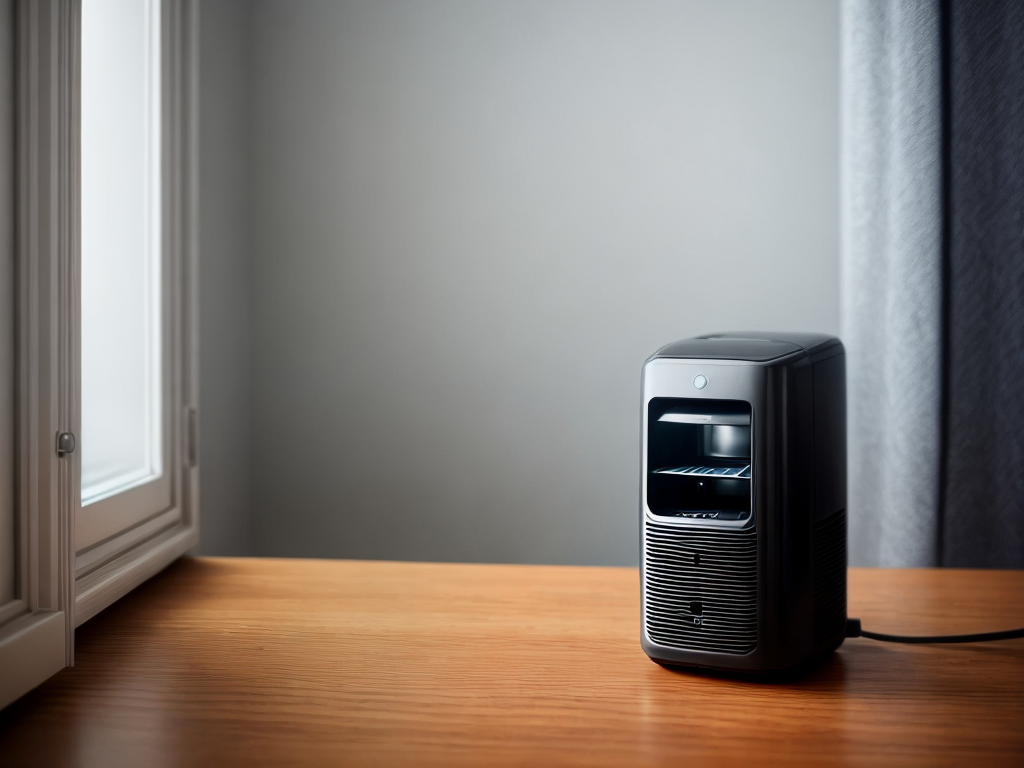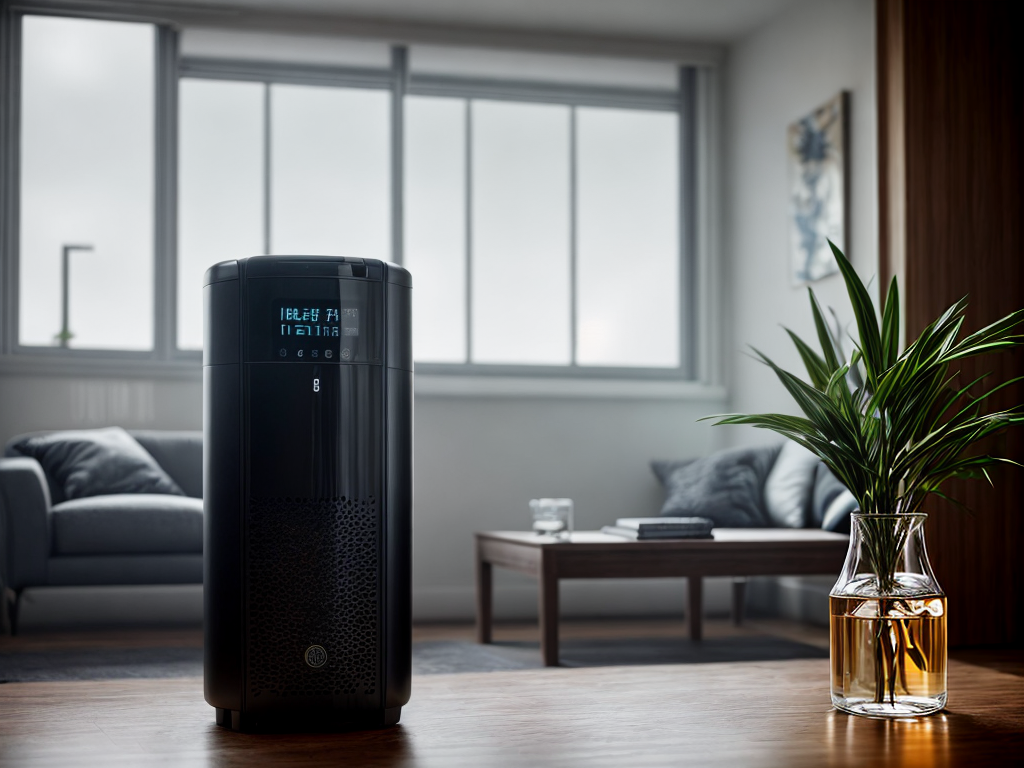
Have you ever been caught in a sudden downpour without an umbrella, feeling the weight of the rain soaking through your clothes? Just like how an umbrella shields you from the rain, a dehumidifier can protect your home from excessive moisture. But, simply owning a dehumidifier is not enough; you need to ensure it is performing at its best to maximize efficiency. In this discussion, we will explore essential tips and tricks to optimize your dehumidifier’s performance, from proper placement to utilizing additional features. So, let’s dive in and discover how to keep your home dry and comfortable.
Proper Placement
I always recommend placing the dehumidifier in the center of the room for optimal performance. Proper placement is crucial when it comes to humidity control and preventing moisture buildup in your space. By positioning the dehumidifier in the center, it allows for even air circulation and effectively targets the entire room.
When it comes to controlling humidity levels, it’s important to consider the layout of your space. Placing the dehumidifier in the center ensures that it can effectively extract moisture from all corners of the room, leaving no area untouched. This strategic placement helps prevent pockets of high humidity that can lead to mold growth and other moisture-related issues.
Another benefit of center placement is that it allows the dehumidifier to operate more efficiently. By being positioned in the middle of the room, it can evenly distribute dry air throughout the space, maintaining a consistent level of humidity control. This not only improves the effectiveness of the dehumidifier, but it also helps save energy by reducing the need for constant operation.
Ideal Humidity Levels
To ensure optimal performance and prevent moisture buildup, understanding the ideal humidity levels is essential, as it builds upon the strategic placement of the dehumidifier in the center of the room. Maintaining the right humidity level not only improves the efficiency of your dehumidifier but also has a significant impact on your health. By monitoring the humidity levels, you can take control of your indoor environment and create a comfortable living space.
Here is a table that provides a visual representation of the ideal humidity levels for different situations:
| Situation | Ideal Humidity Level |
|---|---|
| General comfort | 40-60% |
| Allergen control | 30-50% |
| Preventing mold growth | Below 50% |
| Reducing dust mites | Below 50% |
| Protecting wooden furniture | 35-45% |
Monitoring the humidity level ensures that you maintain a healthy and comfortable environment. High humidity can lead to mold growth, dust mite infestation, and increased allergen levels, which can trigger respiratory issues. On the other hand, low humidity can cause dry skin, irritated eyes, and respiratory problems. By keeping the humidity within the recommended levels, you can prevent these health issues and create a pleasant living space.
Regular Cleaning and Maintenance
Regular cleaning and maintenance are essential for ensuring optimal performance of your dehumidifier. Keeping the unit clean helps prevent the buildup of dust, mold, and other allergens, improving the air quality in your space. It is important to establish a regular cleaning schedule and follow a maintenance checklist to ensure that your dehumidifier continues to function efficiently.
Importance of Cleanliness
Maintaining cleanliness through regular cleaning and maintenance is crucial for optimizing the performance of a dehumidifier. As someone who desires control over the environment, it is important to understand the significance of cleanliness in preventing mold and other issues. By implementing proper cleaning techniques, you can ensure that your dehumidifier operates at its full potential. Regularly cleaning the filter and removing any accumulated debris will help maintain airflow and prevent clogs. Additionally, wiping down the exterior of the dehumidifier with a damp cloth will remove any dust or dirt that may hinder its efficiency. By prioritizing cleanliness and incorporating these maintenance practices, you can maximize the efficiency and longevity of your dehumidifier, giving you the control you desire.
Cleaning Schedule Tips
I find that establishing a consistent cleaning schedule is key to ensuring optimal performance and longevity for my dehumidifier. Here are some tips to help you maintain your dehumidifier effectively:
- Determine the cleaning frequency: Depending on the usage and humidity levels in your area, you may need to clean your dehumidifier more or less frequently. Regularly check the manufacturer’s recommendations for guidance.
- Use effective cleaning techniques: When cleaning your dehumidifier, make sure to unplug it and remove the water tank. Use a damp cloth to wipe down the exterior and interior surfaces. For stubborn dirt or mold, you can use a mild detergent or vinegar solution.
- Pay attention to the filter: Clean or replace the filter regularly to ensure proper airflow and prevent dust buildup. Refer to the manufacturer’s instructions for guidance on filter maintenance.
- Keep the coils clean: Dust and debris can accumulate on the coils, affecting the dehumidifier’s efficiency. Use a soft brush or vacuum cleaner attachment to gently remove any debris.
- Store properly during off-seasons: If you won’t be using your dehumidifier for an extended period, make sure to clean it thoroughly, remove any remaining water, and store it in a dry place.
Maintenance Checklist
To ensure optimal performance and longevity for your dehumidifier, implementing a maintenance checklist is crucial. Regular cleaning and maintenance will help keep your unit running smoothly and efficiently. One important task on the checklist is filter replacement. It’s essential to clean or replace the filter regularly to prevent clogs and improve air quality. Refer to the manufacturer’s instructions for the recommended filter replacement schedule. Additionally, it’s wise to have a troubleshooting guide handy in case any issues arise. This guide will help you identify and resolve common problems, such as unusual noises or the unit not turning on. By following a maintenance checklist and taking proactive measures, you can ensure your dehumidifier performs optimally and lasts for years to come.
Optimal Settings for Energy Efficiency
When it comes to optimizing energy efficiency for your dehumidifier, there are a few key points to consider. First, adjusting the temperature settings to a higher level can help reduce energy consumption. Additionally, following recommended humidity levels for your specific environment can ensure efficient operation while maintaining a comfortable atmosphere.
Energy-Saving Temperature Settings
Using optimal temperature settings is key to maximizing energy efficiency when operating a dehumidifier. By utilizing smart thermostat integration and programmable timers, you can have greater control over the temperature settings and optimize energy usage. Here are some energy-saving temperature settings to consider:
- Set the dehumidifier’s temperature to match your comfort level. Avoid setting it too low or high, as this can lead to excessive energy consumption.
- Use the smart thermostat integration feature to automatically adjust the dehumidifier’s temperature based on the surrounding conditions.
- Take advantage of programmable timers to schedule when the dehumidifier operates. This allows you to align its usage with periods when moisture levels are higher, saving energy during periods of lower humidity.
- Consider using the dehumidifier in conjunction with your air conditioning system. By setting the dehumidifier’s temperature slightly higher than your desired cooling temperature, you can reduce the workload on your AC unit and save energy.
- Regularly monitor and adjust the temperature settings based on changes in humidity levels to maintain optimal energy efficiency.
Humidity Level Recommendations
Maintaining the optimal humidity level is crucial for maximizing energy efficiency when operating a dehumidifier. By controlling the humidity level in your home, you can achieve the perfect balance between comfort and energy savings. The recommended humidity level for most homes is between 30% and 50%. This range not only promotes energy efficiency but also offers various health benefits. Keeping the humidity level within this range helps prevent the growth of mold, dust mites, and other allergens, which can trigger respiratory issues and allergies. Additionally, maintaining the proper humidity level can alleviate dry skin, itchy eyes, and irritated throat. To effectively control the humidity level, it is advisable to use the dehumidifier’s built-in humidistat or a separate hygrometer to monitor and adjust the settings as needed.
Utilizing Additional Features
To enhance the performance of your dehumidifier, consider taking advantage of its additional features. These features are designed to optimize the functionality of your device and provide you with more control over your indoor environment. Here are some ways you can utilize these features:
-
Smart Technology: If your dehumidifier is equipped with smart technology, you can connect it to your smartphone or home automation system. This allows you to monitor and control the humidity levels remotely, making it easier to maintain a comfortable environment.
-
Programmable Timer: Many dehumidifiers come with a programmable timer feature. This allows you to set specific times for the device to turn on and off. You can program it to operate during the hours when humidity levels are typically higher, saving energy and ensuring optimal performance.
-
Auto Restart: In the event of a power outage, an auto restart feature allows your dehumidifier to resume operation once power is restored. This ensures that your device continues to maintain the desired humidity levels without any manual intervention.
-
Filter Indicator: Some dehumidifiers have a filter indicator that alerts you when it’s time to clean or replace the filter. Regular maintenance of the filter ensures efficient operation and prolongs the lifespan of your device.
-
Multiple Fan Speeds: Most dehumidifiers offer multiple fan speed settings. Adjusting the fan speed allows you to customize the airflow and optimize moisture removal based on your specific needs.
Troubleshooting and Common Issues
Now let’s address some common issues that may arise when using a dehumidifier. While dehumidifiers are highly efficient, it is not uncommon to encounter a few problems along the way. One of the most common problems is when the dehumidifier fails to turn on or does not extract moisture from the air effectively. In such cases, it is important to check if the power cord is properly connected and if the unit is set to the desired humidity level. Another common issue is when the dehumidifier produces excessive noise or vibrations. This can be due to a loose fan or compressor, which can be fixed by tightening the screws or seeking professional assistance. Additionally, if the water tank fills up quickly or overflows, it is advisable to check if the drain hose is properly connected and not blocked. Regularly cleaning or replacing the air filter is also crucial to ensure optimal performance. Remember, troubleshooting these common problems can help you maximize the efficiency of your dehumidifier and maintain a comfortable indoor environment.








